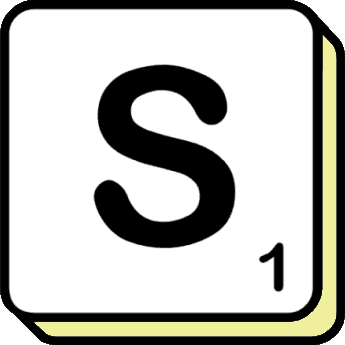Spelling Bee Solver
In the realm of word puzzle games, Spelling Bee has garnered a dedicated following, captivating enthusiasts with its unique blend of challenge and simplicity. Developed by The New York Times, Spelling Bee has become a daily ritual for many, combining the elements of vocabulary building, pattern recognition, and mental agility. Let's delve into what makes this game so engaging and why it has become a staple for word game aficionados.
How to use our Spelling Bee Solver
To use this word finder tool simply enter your letters and then all possible words will be found.
The Basics of Spelling Bee
At its core, Spelling Bee is straightforward: players are presented with a hexagonal grid of seven letters. The goal is to form as many words as possible using these letters, adhering to a few simple rules:
1. Each word must be at least four letters long.
2. Words must include the center letter of the grid.
3. Letters can be used more than once.
Players earn points for each valid word, with longer words yielding more points. Each puzzle contains at least one "pangram," a word that uses all seven letters, which provides a significant point boost. The simplicity of the rules belies the depth of strategy and creativity required to excel, making Spelling Bee both accessible and challenging.
The Appeal of Spelling Bee
One of the game's biggest draws is its balance between ease of entry and the potential for deep engagement. Even casual players can quickly grasp the mechanics and start finding words, while more dedicated players can spend significant time hunting for elusive pangrams and high-scoring words.
The game's design encourages a meditative and focused approach, often turning a daily puzzle into a relaxing ritual. Its format lends itself well to short bursts of play, making it ideal for busy individuals seeking a quick mental workout.
Community and Competition
A significant part of Spelling Bee's charm lies in its community. The New York Times provides a forum where players can discuss the daily puzzle, share strategies, and commiserate over tricky words. This sense of camaraderie and shared challenge enhances the overall experience.
In addition to informal community engagement, The New York Times also features leaderboards, allowing players to see how they stack up against others. This competitive aspect adds an extra layer of motivation, pushing players to improve their skills and climb the ranks.
Educational Benefits
Beyond its entertainment value, Spelling Bee offers numerous educational benefits. The game enhances vocabulary by introducing players to new words and encouraging them to think critically about word formation. It also improves spelling and pattern recognition, skills that are transferable to other areas of learning and daily life.
For younger players, Spelling Bee can be a fun way to engage with language and develop a love for words. The game’s straightforward rules make it accessible to a wide age range, while its depth keeps it interesting for older players and adults.
Conclusion
Spelling Bee is more than just a word puzzle game; it's a daily mental exercise, a community hub, and a tool for learning. Its perfect blend of simplicity and complexity has earned it a devoted following and a special place in the hearts of word enthusiasts. Whether you're a casual player looking to pass the time or a serious wordsmith seeking a challenge, Spelling Bee offers something for everyone, making it a standout in the world of word games.
So, the next time you find yourself with a few minutes to spare, why not take a crack at the Spelling Bee? You might just discover a new favorite pastime.

